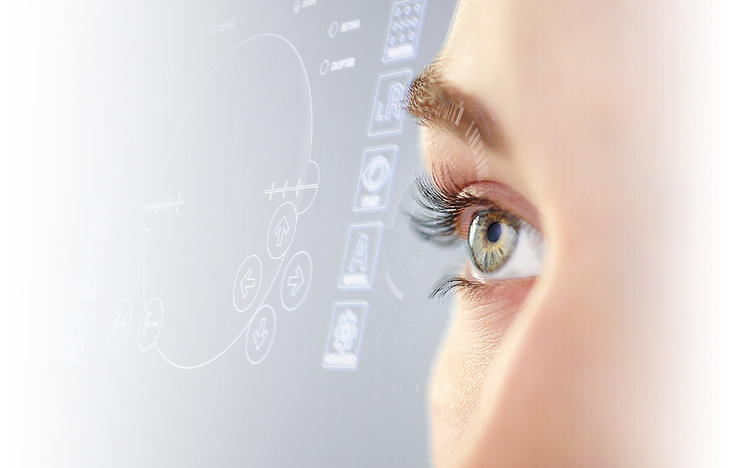All Categories
Featured
The health and wellness of our eyes plays a critical role in our overall well-being. Lots of individuals neglect eye care till issues occur. With the boosting use modern technology, exposure to ecological aspects, and the all-natural aging procedure, taking positive steps to secure your eyes is crucial. In this blog site, we'll review several of one of the most common eye conditions and useful tips on just how to stop them, guaranteeing you keep optimum vision throughout your life.

- Nearsightedness (Near-Sightedness):
Nearsightedness, or near-sightedness, is a condition where far-off items appear blurred while neighboring things remain clear. It occurs when the eye is as well long, or the cornea is also bent, creating light to concentrate in front of the retina. Myopia prevails in children and young people, and its prevalence has actually enhanced because of enhanced display time.
Prevention:
Restriction display time and motivate normal breaks to stay clear of eye strain. Promote outdoor tasks, as research studies suggest that spending time outdoors can decrease the risk of myopia growth in kids. If you are diagnosed with nearsightedness, putting on rehabilitative lenses such as glasses or contact lenses can assist handle the problem. 2. Hyperopia (Far-Sightedness):
Hyperopia, or far-sightedness, is the opposite of nearsightedness. It happens when far-off objects are seen plainly, however close things show up blurred. Hyperopia occurs when the eye is too brief or the cornea is too flat, causing light to focus behind the retina.
Prevention:
Regular eye exams can aid discover hyperopia early. Comparable to myopia, restorative lenses (glasses or get in touches with) are usually suggested to correct the vision. Exercising good aesthetic routines, such as preventing too much close-up help extended periods, can likewise aid relieve signs. 3. Age-Related Macular Deterioration (AMD):
AMD is a condition that affects the macula, the part of the retina in charge of sharp central vision. This age-related condition causes fuzzy or shed vision in the facility of the visual area, which can make tasks like reading or acknowledging faces challenging. While the precise source of AMD isn't totally recognized, it's linked to aging, genes, and environmental factors.
Prevention:
Protect your eyes from UV rays by putting on sunglasses that obstruct 100% of UVA and UVB rays. Consume a diet rich in antioxidants, specifically those found in leafed eco-friendlies, fish, and nuts, to sustain retinal health and wellness. Do not smoke, as smoking is a considerable threat factor for AMD. 4. Cataracts:
Cataracts establish when the lens of the eye ends up being cloudy, harming vision. This condition is most typically linked with aging yet can additionally result from excessive UV direct exposure, smoking cigarettes, or particular medical problems such as diabetes mellitus.
Avoidance:
Wear sunglasses with UV protection to lower UV direct exposure, which is a leading reason for cataracts. Avoid smoking cigarettes, as it speeds up cataract formation. Maintain a healthy and balanced diet plan high in vitamins C and E, which have actually been shown to sustain eye health and stop cataracts. If you have diabetes, it is essential to handle your blood glucose degrees to reduce your risk. 5. Glaucoma:
Glaucoma describes a group of eye problems that damage the optic nerve, often because of high intraocular pressure. It can create progressive vision loss and, if left without treatment, result in loss of sight. Glaucoma is commonly called the "quiet burglar of sight" since it typically develops without recognizable signs and symptoms up until substantial damages has occurred.
Avoidance:
Get normal eye tests, specifically if you have a household history of glaucoma, as it is genetic. Workout frequently to help improve blood flow and maintain healthy eye pressure. If diagnosed with glaucoma, complying with suggested treatments and drugs is vital to handle the condition and prevent additional damage. 6. Dry Eyes:
Dry eye syndrome happens when your eyes do not create adequate rips, or the tears generated are mediocre. This can cause inflammation, soreness, burning, and an abrasive feeling in the eyes. Ecological elements, screen time, and specific medicines can intensify dry eyes.
Avoidance:
Blink much more often when making use of digital gadgets to keep your eyes moist. Use man-made splits or lubricating eye drops to maintain your eyes moisturized. Increase the moisture in dry settings making use of a humidifier. Drink plenty of water to stay hydrated and support tear manufacturing. 7. Conjunctivitis (Pink Eye):
Conjunctivitis, or pink eye, is a swelling of the slim tissue covering the white part of the eye. It can be triggered by microbial or viral infections, allergic reactions, or toxic irritants. It is often transmittable, conjunctivitis is generally a light problem that settles with proper care.
Prevention:
Wash your hands frequently and stay clear of touching your eyes. Do not share individual items such as towels, cushions, or makeup. If you put on contact lenses, make certain to comply with correct health and cleaning methods. Conclusion:
Taking positive measures to safeguard your eyes is necessary in protecting against common eye conditions and keeping healthy and balanced vision. Routine eye examinations, a healthy way of living, and practicing excellent routines like proper display use and UV protection can all assist keep your eyes in top form. By being conscious of prospective threats and taking action now, you can make sure that your vision stays clear and your eyes stay healthy and balanced for many years ahead. Don't wait on eye issues to happen-- look after your eyes today!
Latest Posts
Don’t Miss Exclusive Auto Repair Offers in Chicago at Montclare Auto Repair
Check Out the Best Auto Repair Offers in Montclare, Chicago
Learn About Premier Auto Repair Care at Montclare Auto Repair – Expert Care for Your Vehicle
More
Latest Posts
Don’t Miss Exclusive Auto Repair Offers in Chicago at Montclare Auto Repair
Check Out the Best Auto Repair Offers in Montclare, Chicago
Learn About Premier Auto Repair Care at Montclare Auto Repair – Expert Care for Your Vehicle